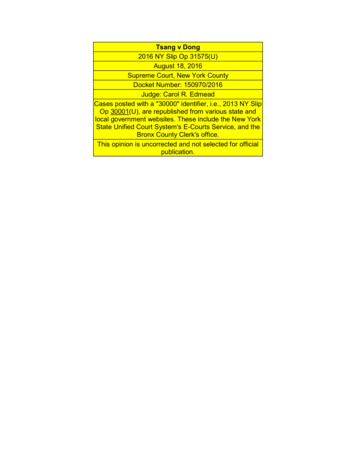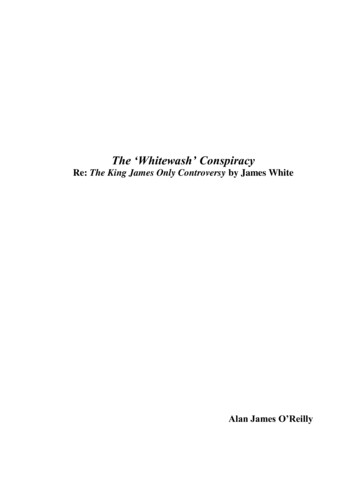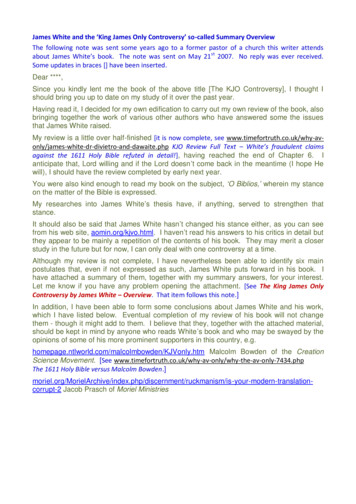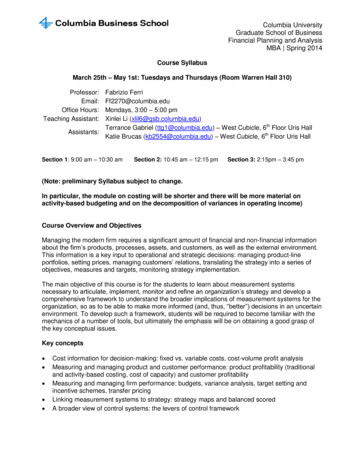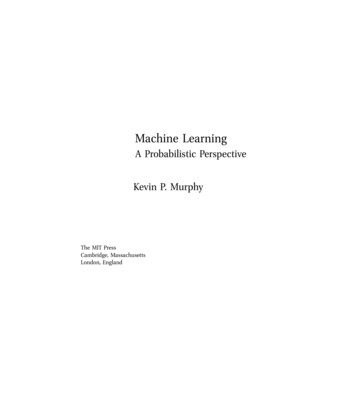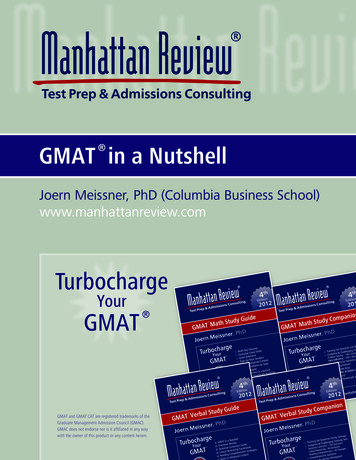
Transcription
James DongQasim Zafar
Used multiple times by millions of people every day Exist in every building Waiting for elevators can be frustrating and wasteful Average elevator rider takes 4 trips per day, 250 daysper year. In New York City, office workers spent a cumulativeamount of 16.6 years waiting for elevator and 5.9 yearselevators in 2010.
Non-homogeneous stochastic arrival of customers Two types of calls: internal and external Has a speed and direction at any point in time Doors open and close Stationary on a floor until doors close Customers can abandon call
Expected wait time of users in the system Maximum wait time Expected number of people whose wait time issubstantially greater than the expected wait time(Quality of Service) Expected length of queue Energy used (Cost)
Proved by Seckinger and Koehler for 1 elevatorwithout capacity constraints Very large state space for solution Large number of constraints Reduces to a time dependent traveling salesmanproblem (TDTSP)
Arrivals State and time-dependentarrival rates Exogenous arrival rates onground floor Arrival rates on floors 2-8 aretime dependent and flooroccupancy dependent Elevator System 8 floors and 3 elevators Doors remain open for 3 secafter last passenger enters Elevators take 5 sec to traverse1 floor Elevator has a capacity of 8passenger
Arrivals Passengers arrive according to non-homogeneous,time-varying Poisson process Passengers are very patient and do not abandon. In fact, when passengers are blocked, they simply pushthe button again after the elevator departs. Elevator System Passenger requests to go up or down Western elevator system Passenger assignments may not be changed Destination floor distribution is time dependent Beginning of day vs. lunch time & end of day
4008765432Building Occupants3503002502001501005000.511.5Time (Seconds)22.534x 10
Time (Seconds)Arrival Floor Relative Percentages
Sectors Each elevator has its own sector, a subset of floors, and onlyservices calls that originate from that sector Nearest Elevator Each passenger is assigned the nearest elevator asdetermined by elevator position, direction of call, andelevator direction Nearest Elevator with Capacity Considerations Similar to Nearest Elevator, but also takes into account theload in each elevator
Elevator 1: {1, 2, 3} Elevator 2: {1, 4, 5} Elevator 3: {1, 6, 7, 4.82seconds Each elevator can serviceground floor since theground floor generallyhas the highest ait 0)5.90%
Compute suitability score foreach elevator when newpassenger arrives (1) Towards a call, same conds316.54seconds FS (N 2) - d (2) Towards the call, oppositedirection FS (N 1) - d (3) Away from call FS 1 N # Floors – 1; d distance between elevatorand callMetricsPercentagesPr(Blocking)11.74%Pr(Wait 0)15.55%
Compute suitability score foreach elevator when newpassenger arrives (1) Towards a call, same conds292.97seconds FS (N 2) - d C (2) Towards the call, oppositedirection FS (N 1) – d C (3) Away from call FS 1 C N # Floors – 1; d distance between elevatorand call C excess capacity of elevatorMetricsPercentagesPr(Blocking)3.48%Pr(Wait 0)12.70%
SectorNearest CarNearest esPr(Blocking)7.30%11.74%3.48%Pr(Wait 0)5.90%15.55%12.70%
There is no best algorithm! Designing effective algorithms is very difficult Can we do better? Context Scheduling Ant Colony Optimization Forecasting
G.C. Barney and S.M. dos Santos, Elevator Traffic Analysis Design and Control, Peter Peregrinus Ltd, London, UK,Second Edition. M. Brand and D. Nikovski, “Optimal Parking in Group Elevator Control,” Proceedings of the 2004 IEEE InternationalConference on Robotics & Automation (2004) 1002-1008. D. Nikovski and M. Brand, “Marginalizing Out Future Passengers in Group Elevator Control,” Proceedings of theNineteenth Conference on Uncertainty in Artificial Intelligence (2003) 443-450. D. Nikovski and M. Brand, “Decision-theoretic group elevator scheduling,” 13th International Conference on AutomatedPlanning and Scheduling (2003). D. Nikovski and M. Brand, “Exact Calculation of Expected Waiting Times for Group Elevator Control,” IEEETransportation Automation Control 49(10) pp. 1820-1823. IBM, “Smarter Buildings Survey,” Apr. 29 2010. T. Strang anad C. Bauer, “Context-Aware Elevator Scheduling,” 21st International Conference on Advanced InformationNetworking and Applications Workshops (2007) vol. 2 pp. 276-281. National Elevator Industry, Inc. A “Step by Step” Guide.
Elevator System . G.C. Barney and S.M. dos Santos, Elevator Traffic Analysis Design and Control, Peter Peregrinus Ltd, London, UK, Second Edition. M. Brand and D. Nikovski, “Optimal Parking in Group Elevator Control,” Proceedings of the 2004 IEEE International Conference on Robotics & Automation (2004) 1002-1008. D. Nikovski and M. Brand, “Marginalizing Out Future Passengers in Group .File Size: 961KBPage Count: 16
